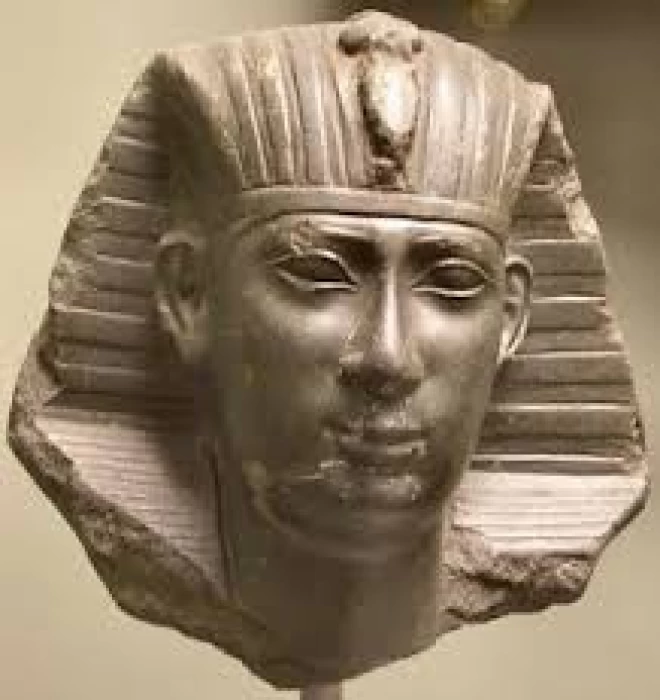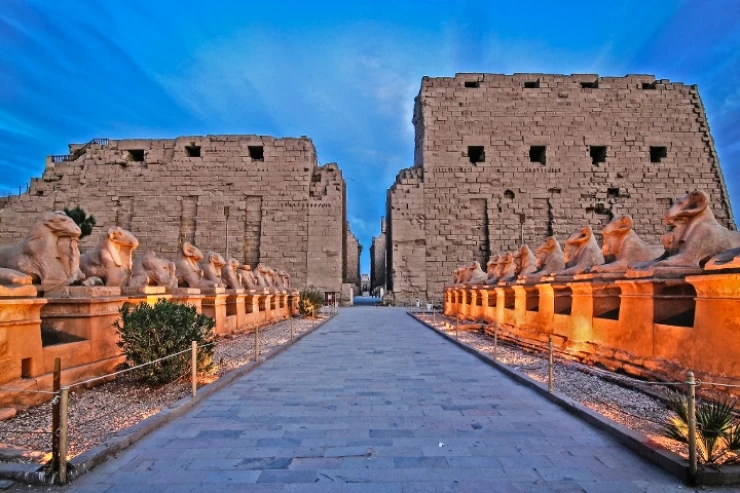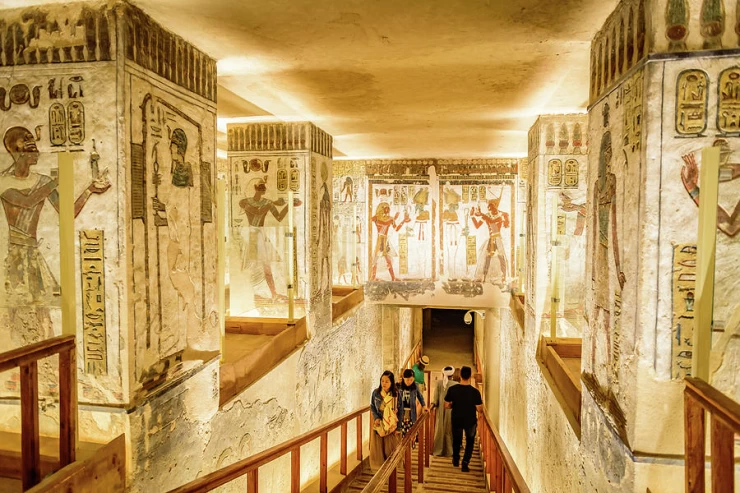
The 26th Dynasty in Ancient Egypt
Information about Egypt's 26th Dynasty
The first three or four kings of this dynasty are separated by some specialists, such as Kenneth Anderson Kitchen, who incorporate them into the XXVth dynasty and give them the name Proto-Saite. These early rulers took advantage of the Assyrian presence, which was favorable to them, and the flight of the Kushites to make themselves independent in Saïs from 672 onwards.
In 656, Psammetichus I, a Prince/Governor of the city, took advantage of the rout of the last Kushite Pharaoh, Tanutamon (664-656, Dynasty XXV), to take control of the region. With the help of Lydian and Greek mercenaries, he succeeded in expelling the Assyrians and re-uniting the country. Until 656, the XXVIth Dynasty can be considered part of the Third Intermediate Period. The real capital was Memphis, but the Saite period characterizes the regime and culture of this period.
This was a period of economic prosperity, and the rulers resumed the policy of Egyptian expansion in Syria and Palestine. Psammetichus I and Necho II supported the former enemy, Assyria, against a new danger from Babylon, but Assyria fell anyway in 609. Necho II took advantage of the situation and annexed the Near East.
For two years, he subdued Syria/Palestine and Phoenicia and reached the Euphrates, where he set the new frontier at Karkemish. In battle at Megiddo, he killed Josiah (or Josiah or Yoshiyahu, 640–609), King of Judah, who had sided with the Babylonians. In 607, he was attacked by the future King of Babylon, Nebuchadnezzar II (605–562). His army was crushed at Karkemish in 605, and Egypt lost its hold on the region.
This Saite renaissance led Egypt to forge new international alliances, including Greek mercenaries (hoplites), Hebrew auxiliaries and Phoenician shipowners. These encouraged maritime activity and trade with Greek cities. The penultimate king of this dynasty, Amasis, even built the Delta town of Naucratis, reserved for Greek colonists. He made alliances with the Lydians in 546, with the Babylonians in 539, and financed the reconstruction of the Temple of Apollo.
We also witnessed artistic achievement and innovation. Monumental activity was high in Memphis, where the Serapeum was enlarged. Numerous buildings were erected in the Delta, first and foremost in Sais, where the great temple to the goddess Neith became one of the country's major cultural and religious centers. It was renowned throughout the ancient world for its medical school. It was at this temple of Neith that Herodotus (Greek historian, c.484-c.425) learned the technique of scribal writing. It was also at this time that a large number of religious and funerary texts were written.
Like the Kushites of Dynasty XXV, who were swept away by an invader, the Saite dynasty suffered the same fate. In Mesopotamia, power shifted to the Persian Achaemenids. They subjugated all the peoples of Persia, Babylonia, Syria/Palestine and Asia Minor. They ruled from the Persian Gulf to the Mediterranean, and were now at the gates of Egypt. In Susa, Cambyses II (529-522) succeeded Cyrus II (559-529). The Persian king marched on Egypt in the spring of 525 and in May crushed the Egyptian army at the battle of Pelusa.
He then invaded the Delta, continued his advance and laid siege to Memphis. After only six months in power, Psammetichus III was defeated. He capitulated and the rest of the country was subdued. Cambyses II deported him to Susa and put him to death. This was the end of Saite Egypt, which came under Persian rule and became a satrapy. However, the first of these Pharaohs of Iran took the name of Mesoutirê, “Descendant of Ra”, and maintained the religious institutions and ways of running the country inherited from the Saites.
Latest Articles
Admin
Aswan Governerate in Egypt
One of Egypt's southern governorates is Aswan Governorate. The city of Aswan serves as its capital. At a latitude of 22 north of the equator (also known as the Tropic of Cancer), it is bounded to the north by the Qena Governorate, to the east by the Red Sea Governorate, to the west by the New Valley Governorate, and to the south by the Republic of Sudan.
Admin
Luxor Governorate Egypt
The capital of the Arab Republic of Egypt is Luxor City, which was once known as "Thebes City" because it served as Egypt's capital during the Pharaonic era. It is situated in the South Upper Egypt region, approximately 670 kilometers from the capital Cairo from the south. It is bordered on the north by Qena Governorate, on the south by Aswan Governorate, on the east by Red Sea Governorate, and on the west by New Valley Governorate.
Admin
History of kafr El Sheikh Governorate
Kafr El Sheikh Governorate is an Egyptian governorate, located in the northernmost part of Egypt in the Nile Delta, with Kafr El Sheikh as its capital. It had a population of 3,172,753 in 2015 and an area of 3,748 km². Its entire area is located north of the delta and overlooks the Mediterranean Sea. The main economic activity of the residents of the governorate is agriculture and fishing, especially the southern lands of the governorate and the lands overlooking the Nile River - Rosetta Branch.
Admin
Egypt's New Administrative Capital
The New Administrative Capital is located between the Cairo-Suez and Cairo-Ain Sokhna roads, 60 km from Cairo and the same distance from Ain Sokhna and Suez. The New Administrative Capital is located on the border of Badr City, in the area between the Cairo-Suez and Cairo-Ain Sokhna roads, just after New Cairo, Mostakbal City and Madinaty.
Admin
Al Gharbia Governorate
Gharbia Governorate is one of the governorates full of archaeological sites, whether they are places or facilities (mosques, churches), as the governorate is a destination for visitors to these places throughout the year, whether they are Egyptians from the different governorates.
Admin
Hamata Islands (Qulaan Archipelago) in Marsa Alam
The Hamata area, south of Marsa Alam in the Red Sea, is one of the most important parts of the Wadi El Gemal Reserve, whether in the desert or the sea. It was named after the sorrel plant, which was distorted to Hamata.















